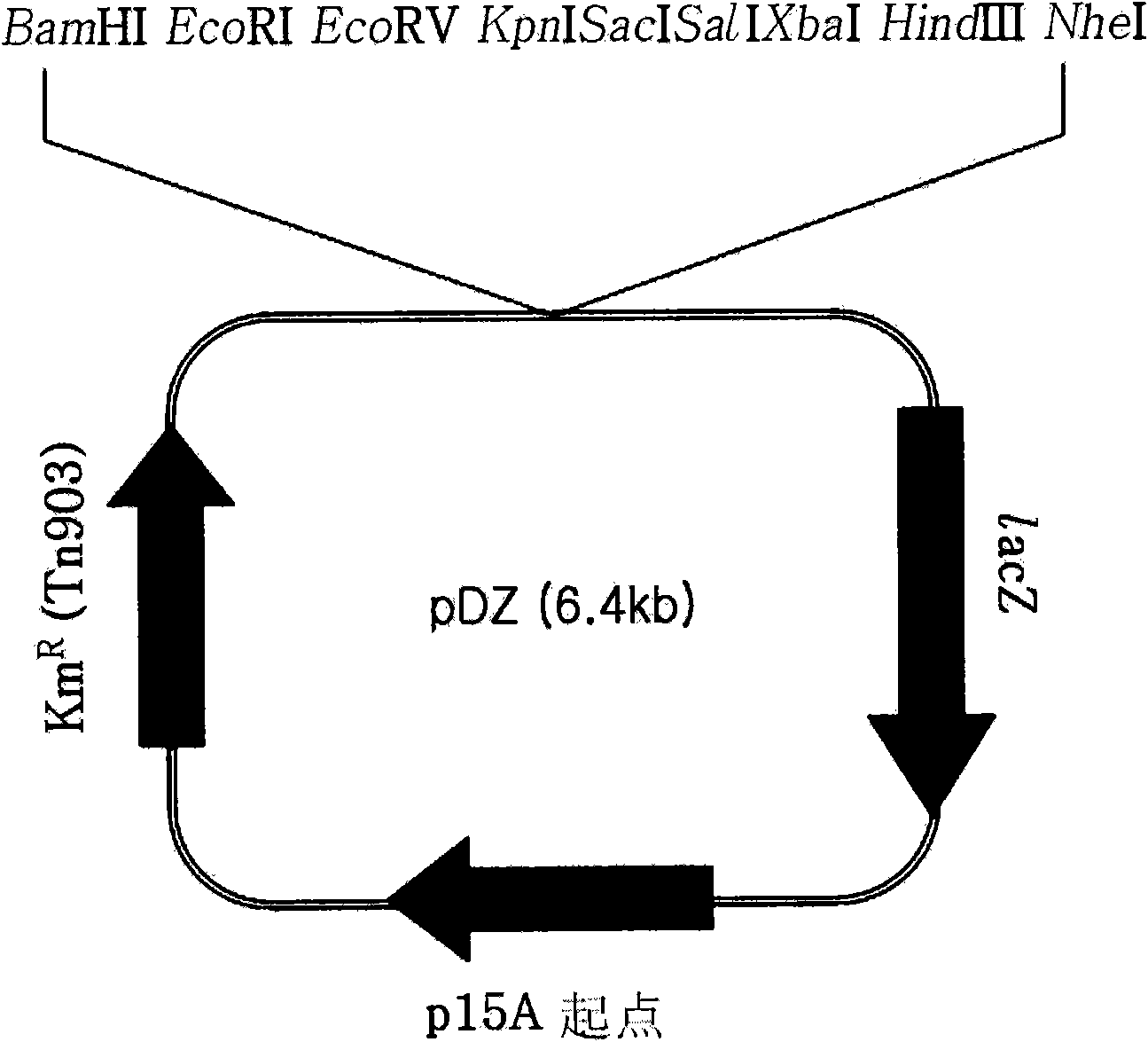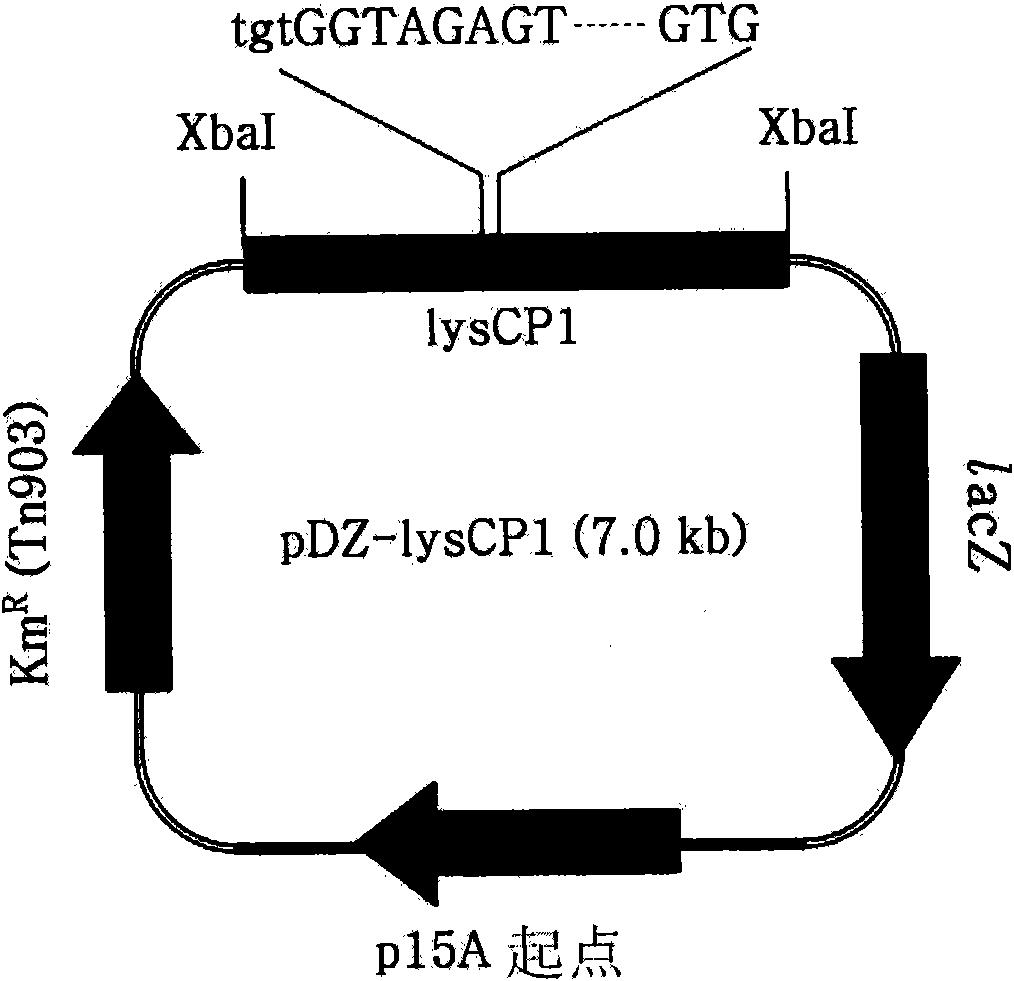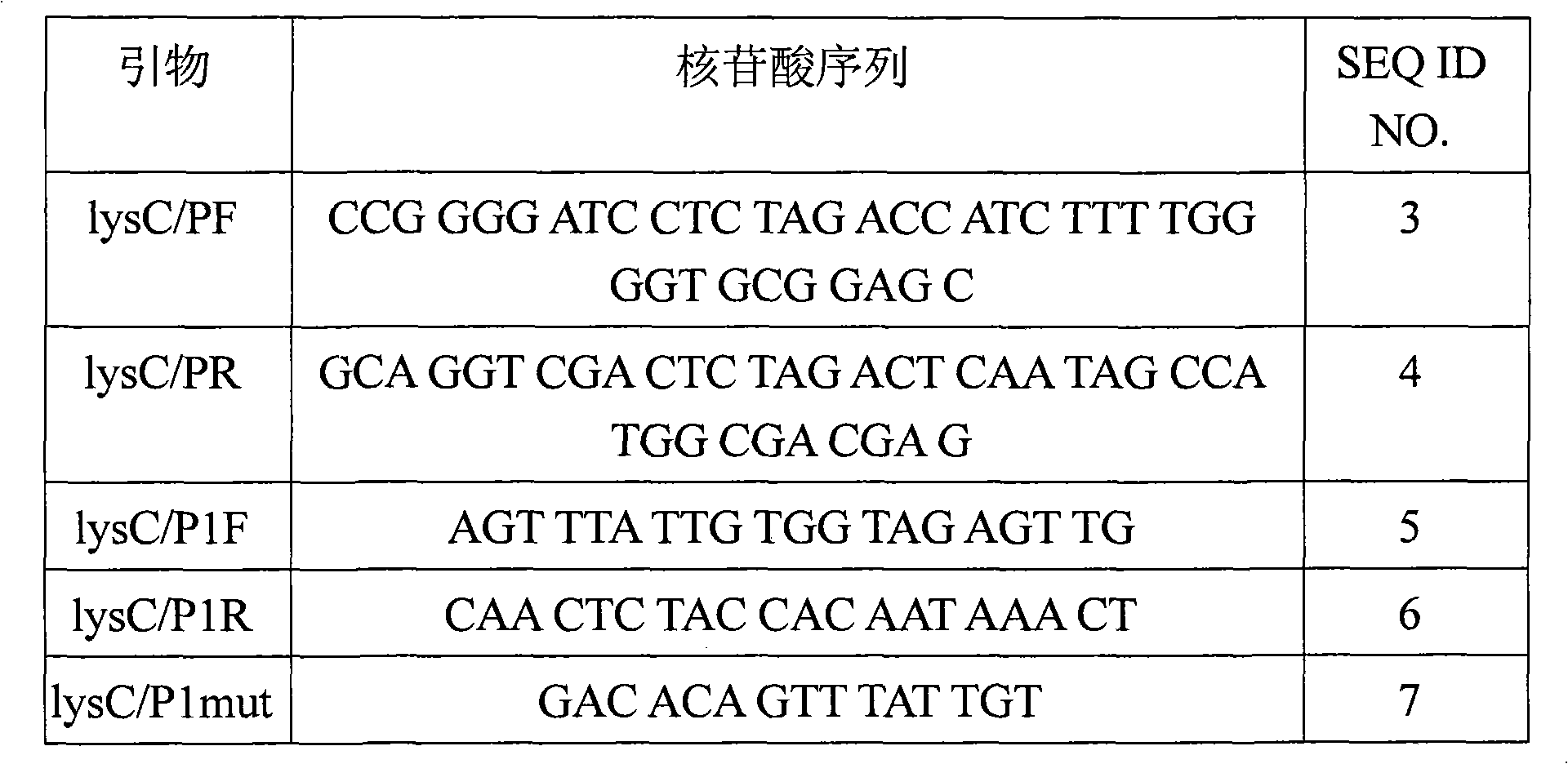Improved promoter and a production method for l-lysine using the same
一种启动子、天冬氨酸的技术,应用在生物化学设备和方法、酵素、氧化还原酶等方向,能够解决没有公开增强启动子的棒状细菌等问题
- Summary
- Abstract
- Description
- Claims
- Application Information
AI Technical Summary
Problems solved by technology
Method used
Image
Examples
Embodiment 1
[0049] Example 1: Construction of a recombinant vector comprising an improved promoter
[0050] (1) Vector construction for integration into the genome (pDZ)
[0051] In this example, pDZ, the vector to be integrated into the coryneform bacterium genome, was constructed on the basis of the vector pACYC177 (New England Biolab, GenBank accession #X06402) for Escherichia coli.
[0052] After treatment with Acul and BanI, the pACYC177 vector was blunt-ended with Klenow fragment. Used as a selection marker, the preparation of the lacZ gene derived from Escherichia coli was by PCR amplifying the genomic DNA of Escherichia coli K12W3110 including the gene and its promoter, and then treating the PCR products with T4 DNA polymerase and polynucleotide kinase, respectively, to generate Phosphorylation of the 5' end and blunting of the opposite end. The two DNA fragments thus obtained were ligated to each other to obtain a circular nucleic acid molecule, and then an artificially synth...
Embodiment 2
[0061] Embodiment 2: the introduction of recombinant vector in Corynebacterium glutamicum bacterial strain
[0062] In this example, the recombinant vector prepared above was introduced into the lysine-producing strain Corynebacterium glutamicum KFCC-10881, so that the modified ddh promoter sequence on the vector could pass through the inner part of the lysC-asd operon on the genome. The original promoter is integrated into the cellular genome by homologous recombination.
[0063] For this purpose, the recombinant vector pDZ-lysCP1 comprising the DNA fragment corresponding to the modified promoter sequence was transformed into Corynebacterium glutamicum KFCC10881 by electroporation method (based on Appl. Microbiol. Biotechnol. (1999) 52: 541-545) , followed by selection of transformants on a selection medium containing 25 mg / L of kanamycin, wherein the modified promoter was integrated into the genome by homologous recombination with the endogenous promoter.
[0064] Successfu...
Embodiment 3
[0066] Example 3: Aspartokinase activity detection of lysC-asd promoter-improved strain
[0067] The mother strain Corynebacterium glutamicum KFCC10881 and the L-lysine-producing strain Corynebacterium glutamicum KFCC10881-lysCP1 finally prepared in Example 2 were cultured, and proteins were isolated from the cultures and assayed for aspartokinase activity as follows.
[0068] Inoculate 50 mL of each culture grown to logarithmic phase into 50 mL of the following seed medium to reach OD 600 The value was 0.3 and incubated until the optical density at 600 nm reached about 15. After collection by centrifugation (5,000 rpm, 15 minutes), the cells were washed twice with 0.1% Tris HCl (pH 8.0), suspended in the same buffer so that the light absorption at 610 nm reached a turbidity of 160. Cells were disrupted for 6 minutes in a glass stirrer with glass beads added at 1.25 g / 1.5 ml suspension. After centrifugation (15,000 rpm, 20 minutes), the protein content of the supernatant w...
PUM
 Login to View More
Login to View More Abstract
Description
Claims
Application Information
 Login to View More
Login to View More - R&D
- Intellectual Property
- Life Sciences
- Materials
- Tech Scout
- Unparalleled Data Quality
- Higher Quality Content
- 60% Fewer Hallucinations
Browse by: Latest US Patents, China's latest patents, Technical Efficacy Thesaurus, Application Domain, Technology Topic, Popular Technical Reports.
© 2025 PatSnap. All rights reserved.Legal|Privacy policy|Modern Slavery Act Transparency Statement|Sitemap|About US| Contact US: help@patsnap.com



